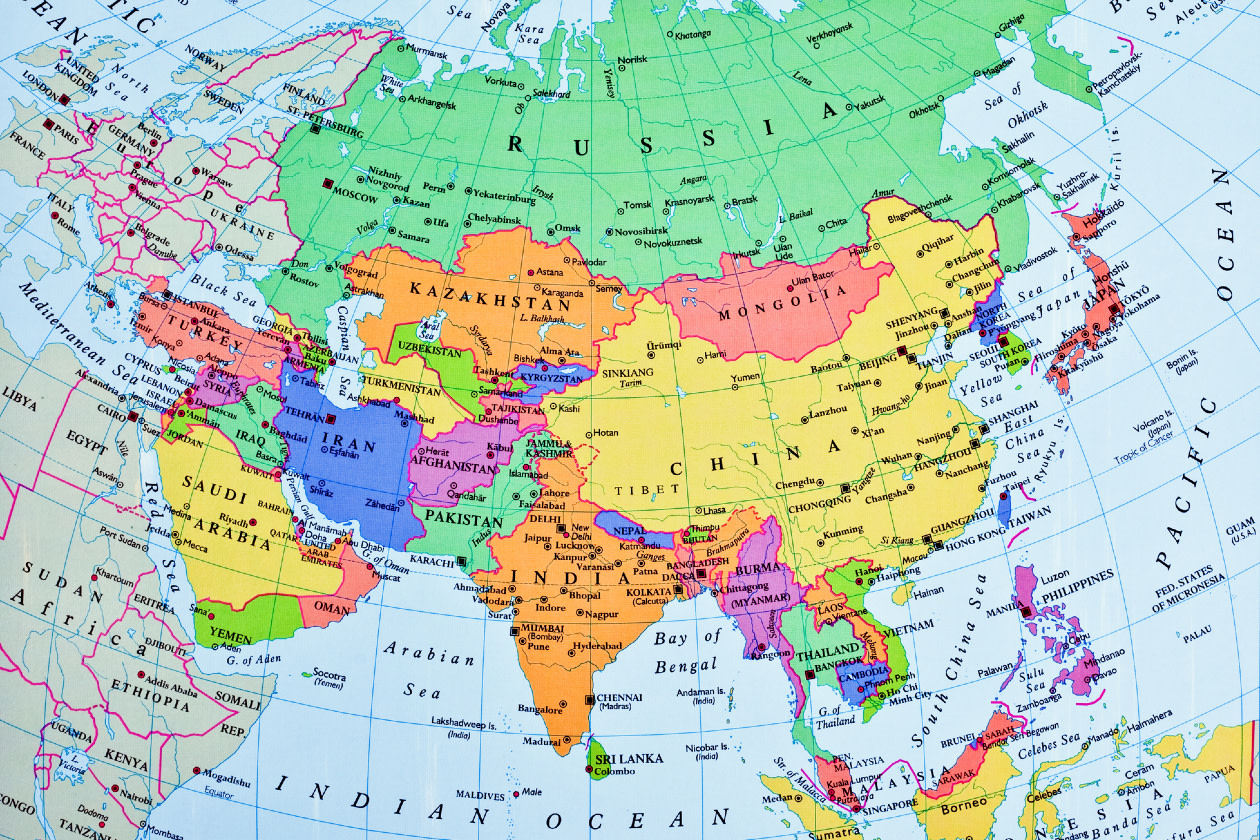Uncertainty around US trade policy and implementation of tariffs continues to hang over financial markets, not least in Asia. The initial 90-day pause offered by the US has reached an end, but it doesn’t feel we’re close to firm resolutions.
Away from the trade uncertainty, central banks have lowered borrowing costs, with interest rate cuts in India, China and Malaysia all coming in the last quarter. These have come amid weaker growth outlooks in many Asian countries.
South Korea held its presidential election, with Lee Jae-Myung of the Democratic Party victorious. This followed the impeachment of Lee’s predecessor at the end of last year.
This article isn’t personal advice. If you’re not sure an investment is right for you, ask for financial advice. Remember, all investments and any income from them can rise and fall in value, so you could get back less than you invest. Past performance also isn’t a guide to the future.
Tariff questions remain
Since US President Donald Trump announced a range of global tariffs in April, countries have scrambled to secure more favourable trading terms with the US.
Asian countries, who typically export more to the US than they import, were awarded some of the highest tariff rates in the world.
Fast forward to now and, after a pause on the tariffs’ implementation to allow countries time to negotiate, the picture remains unclear.
Some countries, like Indonesia and the Philippines, have come to agreements with the US. These still include tariff rates of 19%, but are slightly lower than those initially imposed in April.
Vietnam’s tariff rate has reduced from 46% to 20%, although will see a levy of 40% on any goods ‘transshipped’ through the country. This is where a third country, typically China, exports to Vietnam before the goods are further shipped to their final destination. This is done to mask the origin of the goods and avoid potential import charges.
China and India, large trading partners of the US and important countries to emerging market investors, haven’t found success.
At the time of writing, India is faced with a tariff rate of 25% and threats of harsher penalties to come due to continued importing of Russian oil.
China has yet to come to an agreement with the US, despite multiple rounds of talks, with a further tariff pause looking likely.
Some concessions have been made, with the US allowing more technology exports to China in exchange for easing restrictions on their exports of ‘rare earth’ materials. These are elements of critical importance to many manufacturing industries and is an area where China dominates mining and processing.
Elsewhere, Brazil is facing the highest tariff rate globally at 50%. Despite running a trade deficit with the US, non-trade factors are driving this with the US attempting to stop what they see as a politically-motivated prosecution of Brazil’s former president.
How have stock markets fared?
Despite the ongoing trade uncertainty, markets in Asia and emerging countries have mostly enjoyed a positive time recently.
Over the 12 months to July 2025, the MSCI Emerging Markets index rose 14.41%* while MSCI AC Asia Pacific ex Japan finished 15.29% higher.
Businesses in the financials and technology sectors have performed particularly well in the past year, while energy companies have struggled.
China has been one of the strongest markets, with the MSCI China index rising 38.16% in the period.
The Chinese government are continuing to provide stimulus with the aim of boosting the domestic economy, following a prolonged decrease in consumer confidence brought on by troubles in the housing market.
South Africa and Poland have also seen strong growth, with the benchmarks gaining 23.38% and 33.29% respectively.
MSCI Korea finished the last 12 months 8.23% higher. The country has experienced a turn in fortunes in recent months as investors find positive signs in the new president’s plans for market reform.
At the other end of the performance table, the Indian stock market fell 9.33% in the past 12 months. Some investors withdrew from the market following a period of strong performance and concerns over high valuations across the market.
Annual percentage growth
July 2020 to July 2021 | July 2021 to July 2022 | July 2022 to July 2023 | July 2023 to July 2024 | July 2024 to July 2025 | |
|---|---|---|---|---|---|
MSCI Emerging Markets | 14.23% | -8.33% | 2.93% | 6.86% | 14.41% |
MSCI AC Asia Pacific ex Japan | 14.12% | -5.90% | 1.15% | 7.57% | 15.29% |
MSCI China | -5.23% | -18.00% | -3.54% | -12.03% | 38.16% |
MSCI South Africa | 22.98% | 2.06% | 5.10% | 5.83% | 23.38% |
MSCI Poland | 13.91% | -26.52% | 41.30% | 17.85% | 33.29% |
MSCI Korea | 38.77% | -20.81% | 8.14% | 1.64% | 8.23% |
MSCI India | 35.38% | 18.31% | 2.19% | 36.41% | -9.33% |
How have Wealth Shortlist funds performed?
Performance has varied for the Asia and emerging markets funds on the Wealth Shortlist over the past 12 months.
This is expected though as fund managers have different investment styles and areas of focus.
Investing in funds isn't right for everyone. Investors should only invest if the fund's objectives are aligned with their own, and there's a specific need for the type of investment being made. Investors should understand the specific risks of a fund before they invest, and make sure any new investment forms part of a long-term diversified portfolio.
If you’re looking to invest in emerging markets, a fund that offers wide exposure to Asia or a global emerging markets fund could be a good option. Just remember, investing in these areas typically comes with higher levels of risk than more established markets.
For more details on each fund and its risks including charges, see the links to their factsheets and key investor information below.
FSSA Greater China Growth
The top performer of our Wealth Shortlist funds over the year was FSSA Greater China Growth.
The fund returned 16.00%* in the 12 months to July 2025. This trailed the fund’s MSCI Golden Dragon benchmark, which grew 32.09% and also the IA China/Greater China sector, where the average fund returned 28.39%.
FSSA Greater China Growth is managed by Helen Chen, who took over from previous lead manager Martin Lau in March 2025. Lau, who launched the fund in 2003, remains the fund’s co-manager.
The fund invests in Taiwan and Hong Kong as well as China, which makes it different from most peers in the IA China/Greater China sector.
It looks for companies with reputable management teams and a strong brand that allows them to set prices without affecting consumer demand.
Over the past year, the fund has benefited from investments in the communication services. Compared to the benchmark, having more invested in consumer cyclical companies has been a detractor.
Investing in a single emerging market is a higher risk approach. While the fund is mostly invested in large companies, it can invest in smaller companies too, which increases risk.
Stewart Investors Indian Subcontinent All Cap
Stewart Investors Indian Subcontinent All Cap was the weakest Wealth Shortlist fund over the past 12 months.
During this time, the fund fell 14.72%, which was behind the 9.33% loss of the MSCI India benchmark. The fund also trailed the IA India/Indian Subcontinent sector, where the average fund fell 7.89%.
The fund has been managed by Sashi Reddy since 2012. David Gait serves as deputy manager and has been involved with the fund since 2007.
The fund managers have built a concentrated fund of companies from the Indian Subcontinent that they believe have some of the best financial strength and growth prospects in the market.
The managers currently invest more than the benchmark in industrials companies. But our analysis suggests that stock selection in this sector has been a detractor to performance over the past year.
The fund’s larger allocation to small and medium-sized companies was also a detractor, as this part of the market underperformed. Although stock selection in this area was strong.
Investing in a single emerging market is a higher-risk approach, as is investing in smaller companies.
This fund also has one of the highest ESG (Environmental, Social and Governance) risk profiles of funds under our research coverage. The companies within the fund could therefore face increased regulatory scrutiny, reputational damage, and operational challenges, potentially impacting the fund's future performance.
Annual percentage growth
July 2020 to July 2021 | July 2021 to July 2022 | July 2022 to July 2023 | July 2023 to July 2024 | July 2024 to July 2025 | |
|---|---|---|---|---|---|
FSSA Greater China Growth | 17.06% | -10.95% | -2.08% | -9.98% | 16.00% |
MSCI Golden Dragon | 5.89% | -12.61% | -1.74% | 0.62% | 32.09% |
IA China/Greater China | 5.26% | -14.28% | -10.19% | -16.18% | 28.39% |
Stewart Investors Indian Subcontinent All Cap | 48.55% | 15.87% | 7.38% | 26.12% | -14.72% |
IA India/Indian Subcontinent | 42.64% | 10.84% | 4.54% | 31.91% | -7.89% |


